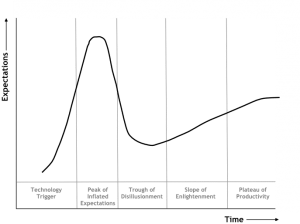One of the top concerns for HR executives in 2017 is how to raise employee engagement, and for good reason. Engagement is on the decline across the world, and that spells trouble for business leaders everywhere.
A recent study by Aon Hewitt has revealed that employee engagement dipped for the first time since 2012. The 2017 Trends in Global Employee Engagement Report, which covered more than five million employees at over 1,000 organizations around the world, showed that less than one quarter of employees are highly engaged and 39 percent are moderately engaged. In a single year, employee engagement globally dropped from 65% in 2015 to 63% in 2016.
Some areas of the world, like Singapore, have fared even worse than the average and seen employee engagement levels “plummet.”
Ken Oehler, Global Culture & Engagement Practice leader at Aon Hewitt, attributes this drop to rapid advances in technology that are increasingly threatening job security. Additionally, he says, “the rise in populist movements like those in the U.S., the U.K. and other regions is creating angst within organizations as they anticipate the potential for a decrease in free labor flow.” He expects the trend of declining employee engagement to continue.
Why does this matter? According to the same research, a five-point increase in employee engagement is linked to a three-point increase in revenue growth in the subsequent year. When engagement levels drop, the opposite happens: the study cites consequences such as higher turnover, steeper absenteeism, lower customer satisfaction, and ultimately, poor financial performance.
The Aon Hewitt report advises companies that while they can’t control worldwide events that are negatively affecting employee attitudes, they can make the workplace more appealing to employees through positive solutions. This includes supportive approaches such as employee development, wellness programs, more flexible work schedules, and ensuring that workers have the training and tools needed to perform their jobs.
Allow me to spell out something that the report did not; strong corporate volunteer programs address the stubborn challenges of employee engagement and offer onramps for the positive solutions suggested by Aon Hewitt’s study.
For example, well structured volunteer and giving programs can be used as effective tools for such engagement-building perks as skills training, leadership development and team-building. Further, social impact efforts can achieve some of the goals of a wellness program, which was also recommended by the Aon Hewitt study.
Think that equating a volunteer program with a wellness program is a stretch? Nope. Giving back offers employees a sense of purpose that has a well documented improvement on their health. An article in The Atlantic by James Hamblin cites a study by Eric Kim and Sara Konrath that proved volunteers were more likely to get flu shots, mammograms, Pap smears, cholesterol tests, and prostate exams. Most importantly, volunteering was associated with 38 percent fewer nights spent in the hospital. The fact that people who volunteer lead longer, healthier lives has some public health experts concluding that doctors should be recommending volunteering right alongside diet and exercise.
Employee engagement expert Kevin Kruse wrote recently about the challenge of building a culture where employees are intrinsically motivated. He believes that traditional reward and recognition programs do nothing to help employee engagement, and he spoke with Yale psychologist Paul Marciano, Ph.D. on how to make an emotional connection with employees.
The author of several books, including Super Teams and the bestseller Carrots and Sticks Don’t Work: Build a Culture of Employee Engagement with the Principles of Respect, Marciano believes that reward and recognition programs are actually counterproductive and decrease workplace morale. The reason is that these programs have nothing to do with building respect for the organization, which helps employees take pride in their work and their fellow team members.
Marciano’s “Respect” model lays out the drivers of motivation and engagement. Briefly, it translates to this: the R is for Recognition (but not the traditional “employee of the month” kind); the E is for Empowering Employees; the S is for Supportive Feedback; P is for Partnering; the second E is for setting clear Expectations; the C is for Consideration; and the T is for Trust.
While this model offers a broad overview for the ideal communications dynamic between supervisors and employees, it can also serve as a how-to guide for visionary CSR leaders. Corporate volunteer programs are a perfect vehicle to build the kind of pride and respect that Marciano believes every employee needs to feel for his company in order to be truly engaged. A volunteer program that adheres to the best practices of employee engagement leadership is a one-two punch.
The new data about global engagement declines offer further proof that employees are craving far more from their companies than a limited worldview and pats on the head. With the state of employee engagement as precarious as it is, HR leaders must recognize that the usual solutions aren’t working. It’s time to look for new avenues of engagement. Well-executed corporate volunteer programs have the potential for so many different kinds of engagement benefits that company leaders would be well-served to double-down on their CSR efforts and max out the enormous engagement-boosting potential of these programs.
Digital & Social Articles on Business 2 Community(71)




